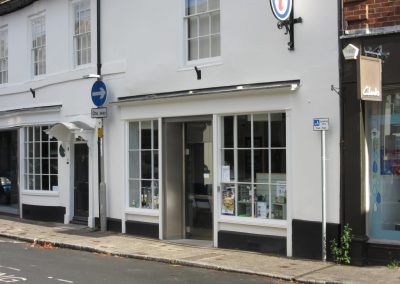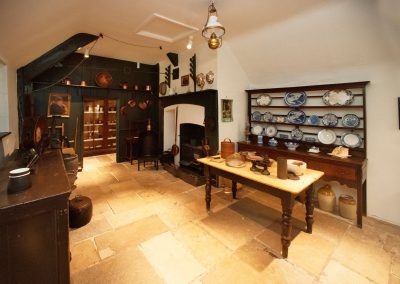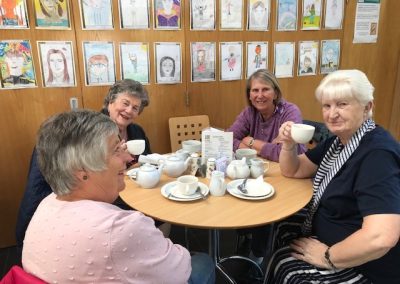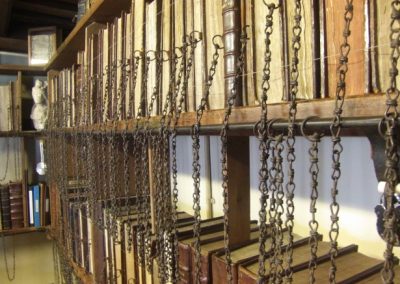This month the Tea at the Museum group visited Wimborne to tour the refurbished Museum of East Dorset and the Chained Library in the Minster.
The Museum of East Dorset
This historic building dates back to the 1500s. For more than 400 years, many different families owned and occupied the building. They added, demolished, altered and extended it as fashions changed and to meet their needs.
Hilda Coles inherited the ironmonger’s business from her father, Tom Frank Coles, following his death in 1953. Seven years later, she took the decision to close the shop and fulfil his long-held wish to turn the building, known as the Priest’s House, into a museum. Hilda opened the museum in July 1962 and ran it until her death in 1987.
During the 1990’s The Priest’s House Museum Trust restored the building and extended the display area to ten rooms.
Thanks to a fundraising campaign in 2012 – 2014, and a grant from the Heritage Lottery Fund, the museum expanded its facilities to include the Hilda Coles Open Learning Centre as well as storage facilities for the collections and a Tea-room.
Most recently, in 2020 following a major fundraising campaign and a further grant from the Heritage Lottery Fund, the building was restored and refurbished as the Museum of East Dorset.
Over the afternoon we were shown round by excellent volunteer guides. We enjoyed reminiscing of days gone by in the kitchen and at the collection of unique Victorian Valentine cards which were an interesting read!! Roman artifacts, the collection of toys and interactive displays also were our interest.
At the end of our tour, we were able to access the walled garden with its heritage fruit trees and enjoy tea and cake in the Tearoom
The Chained Library Wimborne Minster
The Chained Library, founded in 1686. It was one of the first public libraries in the country and is the second largest chained library.
The first donation of books came from Revd William Stone, who had seen many religious books like his being burnt by the authorities and wanted to ensure that part of his collection would be kept safe in Wimborne. These theological books were in Latin, Greek and Hebrew, and so must have been used mainly by the clergy. They were not chained.
When another local donor, Roger Gillingham, gave another 90 books in 1695, he insisted that the books be chained up, but also that the library should be opened and free for the people of the town, providing they were ‘shopkeepers or the better class of person’.
The library’s collection includes early books on gardening, medicine, law, etiquette, and building, as well as Walton’s great Polyglott Bible of 1657 (in nine languages). The display case in the library shows some of the most interesting and entertaining works.
A big thanks to Pam Small and Kay Weeks for arranging a lovely afternoon.








